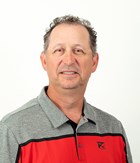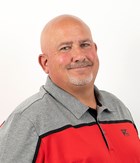Three Conditions and Three Tips to Consider for 2024 Alfalfa Winterkill Assessments
BY Dairyland Seed Agronomy Team
The record warm winter of 2024 led to an early break of dormancy in alfalfa stands throughout the Midwest, even in the far north. Cold snaps mixed in, variable snow fall and a lack of frost in the ground puts us in uncharted territory when it comes to predicting the effects on alfalfa stands. What does the Dairyland Seed Agronomy Team anticipate from these variables?
- Cold following dormancy break: Each time the plant has to “restart” (in the absence of photosynthesis) there is stress placed on the energy reserves in the root. Very hard, repeated cold cycles could compromise stands, but established stands are hardy, and most should be ok despite this cycling.
- Snow cover: The general lack of snow cover has exposed stands to freeze/thaw temperature swings. This could create more heaving events, but the lack of soil moisture and warmer temperatures will hopefully compensate.
- Lack of frost: Freeze/thaw cycling in the soil creates crown heaving. Without frost, precipitation will infiltrate soil and not over-expose root crowns to wet, icy microclimates. In combination with dry conditions and warmer temperatures, this should be positive for stands. Timing of precipitation and the intensity of temperature swings will be key.
Here are three reminders for assessing fields, no matter the conditions you have experienced:
- Timing: Don’t assess too early and quit for the year. A live stand in March could still be compromised by future conditions.
- Observations to look for:
- Dig plants and split the taproot open. Roots should be firm, white, and smell like fresh cut alfalfa. Brown/yellow, rotten, and mushy tap roots/crowns are dead plants.
- The presence of black root lesions (likely phytophthora), while not good, can be tolerated if the crown has not been completely choked out.
- Frost heaved plants will have the crowns pushed above the soil surface. If crowns are heaved only ~1/2”, they are likely to pull back into the ground and be okay.
- Stem counts: Stand assessments are best done with stem counts. As stands age, the number of plants per square foot will decrease, but the number of stems per plant should be increasing to compensate. Survey the entire field.


Brian Weller
Western Region
507.456.3034

Rod Moran
Western Region
507.456.3034

Dan Ritter
Central Region
219.863.0583

Branden Furseth
Northern Region
608.513.4265

Mark Gibson
Eastern Region
260.330.8968

Amanda Goffnett
Eastern Region
989.400.3793

Ryan Mueller
Eastern Region
989.400.3793
